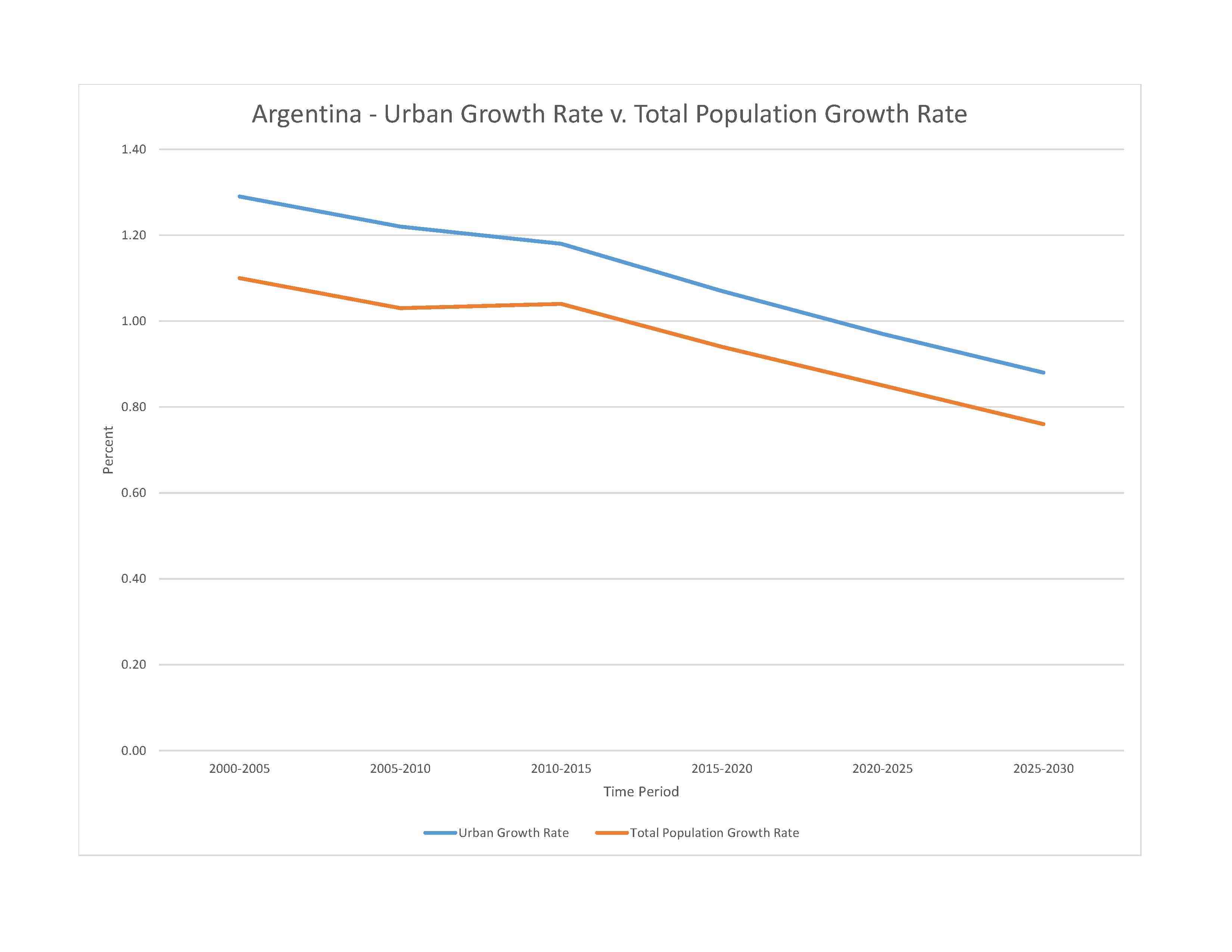
46,621,847 (2023 est.)
noun: Argentine(s)
adjective: Argentine
European (mostly Spanish and Italian descent) and Mestizo (mixed European and Amerindian ancestry) 97.2%, Amerindian 2.4%, African descent 0.4% (2010 est.)
Spanish (official), Italian, English, German, French, indigenous (Quechua, Guarani, Mapudungun)
major-language sample(s):
La Libreta Informativa del Mundo, la fuente indispensable de información básica. (Spanish)
The World Factbook, the indispensable source for basic information.
Spanish audio sample:
Roman Catholic 62.9%, Evangelical 15.3% (Pentecostal 13%, other Evangelical 2.3%), Jehovah's Witness and Church of Jesus Christ 1.4%, other 1.2% (includes Muslim, Jewish), none 18.9% (includes agnostic and atheist), unspecified 0.3% (2019 est.)
Argentina's population continues to grow but at a slower rate because of its steadily declining birth rate. Argentina's fertility decline began earlier than in the rest of Latin America, occurring most rapidly between the early 20th century and the 1950s, and then becoming more gradual. Life expectancy has been improving, most notably among the young and the poor. While the population under age 15 is shrinking, the youth cohort - ages 15-24 - is the largest in Argentina's history and will continue to bolster the working-age population. If this large working-age population is well-educated and gainfully employed, Argentina is likely to experience an economic boost and possibly higher per capita savings and investment. Although literacy and primary school enrollment are nearly universal, grade repetition is problematic and secondary school completion is low. Both of these issues vary widely by region and socioeconomic group.
Argentina has been primarily a country of immigration for most of its history, welcoming European immigrants (often providing needed low-skilled labor) after its independence in the 19th century and attracting especially large numbers from Spain and Italy. More than 7 million European immigrants are estimated to have arrived in Argentina between 1880 and 1930, when it adopted a more restrictive immigration policy. European immigration also began to wane in the 1930s because of the global depression. The inflow rebounded temporarily following WWII and resumed its decline in the 1950s when Argentina's military dictators tightened immigration rules and European economies rebounded. Regional migration increased, however, supplying low-skilled workers escaping economic and political instability in their home countries. As of 2015, immigrants made up almost 5% of Argentina's population, the largest share in South America. Migration from neighboring countries accounted for approximately 80% of Argentina's immigrant population in 2015.
The first waves of highly skilled Argentine emigrant workers headed mainly to the United States and Spain in the 1960s and 1970s, driven by economic decline and repressive military dictatorships. The 2008 European economic crisis drove the return migration of some Argentinean and other Latin American nationals, as well as the immigration of Europeans to South America, where Argentina was a key recipient. In 2015, Argentina received the highest number of legal migrants in Latin America and the Caribbean. The majority of its migrant inflow came from Paraguay and Bolivia.
0-14 years: 23.51% (male 5,645,070/female 5,316,156)
15-64 years: 63.83% (male 14,929,084/female 14,827,733)
65 years and over: 12.66% (2023 est.) (male 2,511,984/female 3,391,820)
total dependency ratio: 54.3
youth dependency ratio: 36
elderly dependency ratio: 18.2
potential support ratio: 5.5 (2021 est.)
total: 33 years (2023 est.)
male: 31.8 years
female: 34.3 years
0.8% (2023 est.)
15.4 births/1,000 population (2023 est.)
7.3 deaths/1,000 population (2023 est.)
-0.1 migrant(s)/1,000 population (2023 est.)
one-third of the population lives in Buenos Aires; pockets of agglomeration occur throughout the northern and central parts of the country; Patagonia to the south remains sparsely populated
urban population: 92.5% of total population (2023)
rate of urbanization: 0.97% annual rate of change (2020-25 est.)

15.490 million BUENOS AIRES (capital), 1.612 million Córdoba, 1.594 million Rosario, 1.226 million Mendoza, 1.027 million San Miguel de Tucumán, 914,000 La Plata (2023)
at birth: 1.07 male(s)/female
0-14 years: 1.06 male(s)/female
15-64 years: 1.01 male(s)/female
65 years and over: 0.74 male(s)/female
total population: 0.98 male(s)/female (2023 est.)
45 deaths/100,000 live births (2020 est.)
total: 9.1 deaths/1,000 live births (2023 est.)
male: 10.1 deaths/1,000 live births
female: 8.1 deaths/1,000 live births
total population: 78.6 years (2023 est.)
male: 75.5 years
female: 81.8 years
2.17 children born/woman (2023 est.)
1.05 (2023 est.)
70.1% (2019/20)
improved: urban: 99.8% of population
rural: N/A
total: N/A
unimproved: urban: 0.2% of population
rural: N/A
total: (2020 est.) NA
10% of GDP (2020)
4.06 physicians/1,000 population (2020)
5 beds/1,000 population (2017)
improved: urban: 100% of population
rural: N/A
total: N/A
unimproved: rural: N/A
total: (2020 est.) NA
28.3% (2016)
total: 7.95 liters of pure alcohol (2019 est.)
beer: 3.62 liters of pure alcohol (2019 est.)
wine: 2.88 liters of pure alcohol (2019 est.)
spirits: 0.72 liters of pure alcohol (2019 est.)
other alcohols: 0.72 liters of pure alcohol (2019 est.)
total: 24.5% (2020 est.)
male: 29.4% (2020 est.)
female: 19.6% (2020 est.)
1.7% (2018/19)
48.9% (2023 est.)
women married by age 15: 2.4%
women married by age 18: 15.5% (2020 est.)
5% of GDP (2020 est.)
definition: age 15 and over can read and write
total population: 99%
male: 98.9%
female: 99.1% (2018)
total: 18 years
male: 17 years
female: 20 years (2020)
NOTE: The information regarding Argentina on this page is re-published from the 2024 World Fact Book of the United States Central Intelligence Agency and other sources. No claims are made regarding the accuracy of Argentina 2024 information contained here. All suggestions for corrections of any errors about Argentina 2024 should be addressed to the CIA or the source cited on each page.
This page was last modified 04 May 24, Copyright © 2024 ITA all rights reserved.